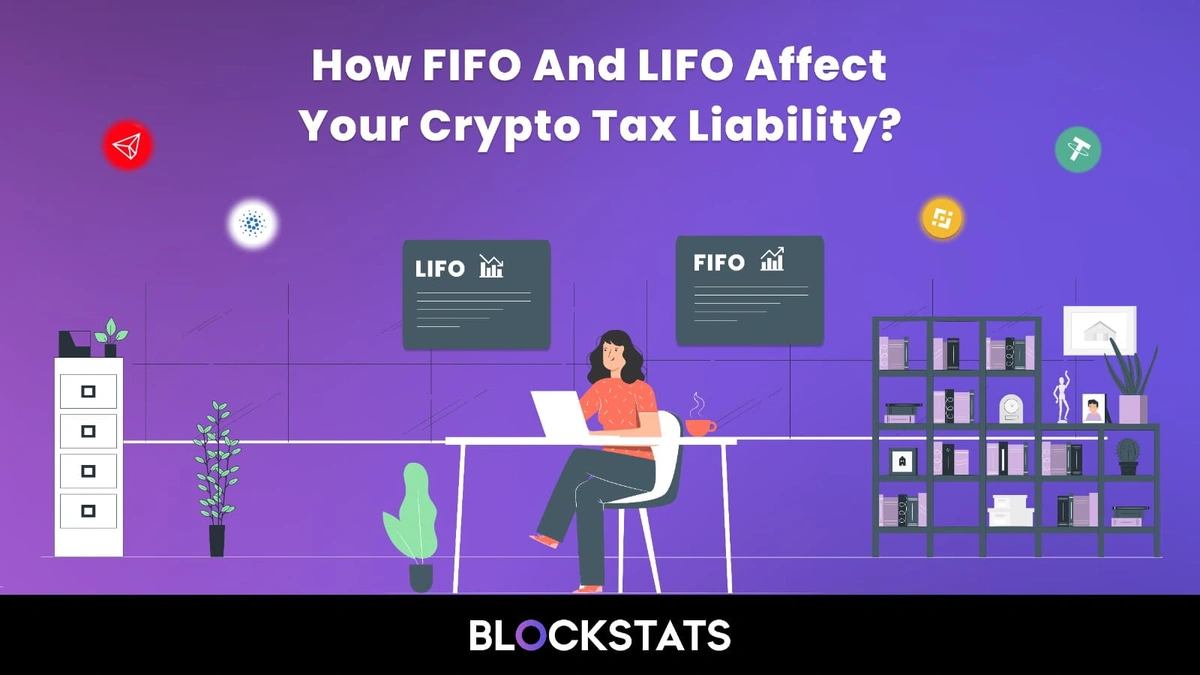How FIFO and LIFO Affect Your Crypto Tax Liability?
When you buy and sell cryptocurrency, you are not just swapping tokens—you are also creating taxable events. But here is the catch: how much tax you owe on those trades can vary dramatically depending on which accounting method you use.
The two most common methods are FIFO (First In, First Out) and LIFO (Last In, First Out). Each has a different way of calculating gains and losses, which in turn affects your tax liability.
Let’s break down how these methods work and how they can influence your crypto taxes in 2025.
What Are FIFO and LIFO in Crypto Taxes?
Both FIFO and LIFO are inventory accounting methods used to track cost basis—basically, what you paid for your crypto—so that when you sell, you can calculate how much profit (or loss) you made.
FIFO (First In, First Out)
The earliest coins you bought are considered the first ones you sold. This usually leads to higher capital gains in bull markets because older crypto was likely purchased at a lower price.
LIFO (Last In, First Out)
The most recent coins you bought are considered the first ones you sold. This can reduce capital gains if the latest purchases were made at higher prices, especially in a rising market.
Real-Life Example: FIFO vs. LIFO
Let’s say you made the following Bitcoin purchases:
-
1 BTC at $10,000 in January
-
1 BTC at $25,000 in July
-
1 BTC at $40,000 in November
Then you sell 1 BTC in December for $45,000.
Using FIFO:
You sell the BTC bought at $10,000
Capital gain = $45,000 - $10,000 = $35,000
Using LIFO:
You sell the BTC bought at $40,000
Capital gain = $45,000 - $40,000 = $5,000
Tax impact? Huge difference.
In FIFO, your gain is $35,000; in LIFO, it is just $5,000. That is the impact of selecting the correct accounting strategy.
Read next: Crypto cost basis tracking guide for FIFO & LIFO
Which Method Is Better for Crypto Traders?
Your ideal method depends on how you trade, current market dynamics, and your financial objectives.
Use FIFO if:
-
You want to realize larger gains now.
-
You have held assets long enough to qualify for long-term capital gains rates.
-
You bought crypto at higher prices recently and want to avoid realizing losses.
Use LIFO if:
-
You want to reduce your short-term gains (especially if you are actively trading).
-
You have been buying during rising markets and want to sell recent, higher-cost assets.
-
You are trying to defer taxes to future years.
Read next: How to calculate crypto taxes: U.S. Guide
How FIFO and LIFO Affect Tax Reporting?
In most countries, tax authorities require consistency in your chosen method. For example:
-
In the United States: You must clearly state and stick with one method for your tax year unless approved for a change.
-
Other regions (UK, Canada, Australia): Often default to FIFO or use adjusted cost base (ACB), with stricter rules.
This is why it is important to use crypto tax software or services that support both methods and are compliant with local laws. Tools like Blockstats can help track your cost basis, calculate gains under different methods, and prepare reports for filing.
Common Mistakes to Avoid
-
Mixing methods mid-year without proper reporting
-
Ignoring wash sale rules (if applicable in your country)
-
Failing to track historical cost basis across wallets and exchanges
-
Overlooking tax implications of staking rewards and airdrops
Even a small mistake in applying FIFO or LIFO can trigger audits or lead to overpaying taxes.
Read next: How DeFi is taxed in USA
Simplify FIFO vs. LIFO with Automated Tax Reporting on Blockstats
Understanding how FIFO and LIFO work is essential for smart crypto tax planning. The method you choose can make a significant difference in your capital gains and the taxes you owe.
As 2025 brings increasing scrutiny from tax authorities worldwide, staying compliant and tax-efficient is more important than ever. Whether you are a casual trader or a daily degen, using a platform like Blockstats to manage your crypto transactions, monitor gains, and simulate tax scenarios is a game-changer.
Check out our free crypto tax calculator to estimate your tax liability.
Bottom line:
Choose your tax method and strategy wisely—your wallet will thank you at the end of the year.

